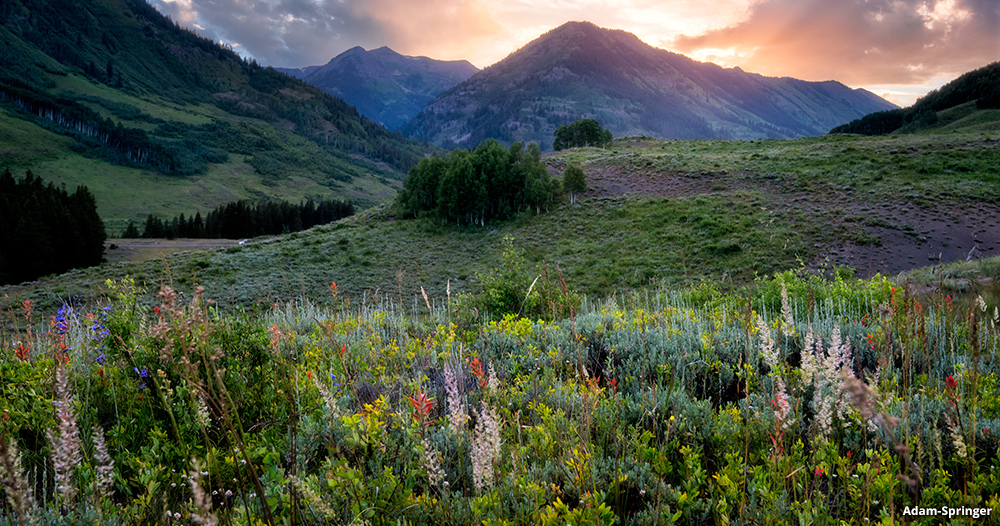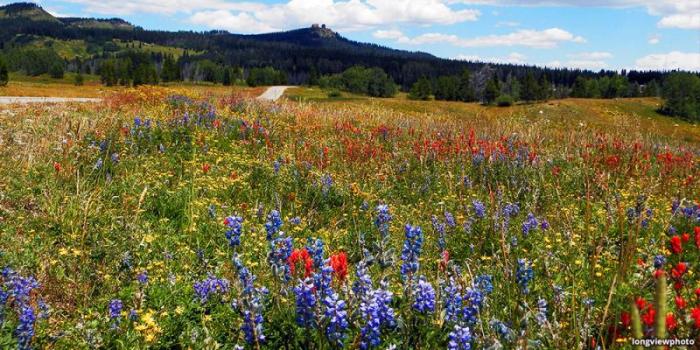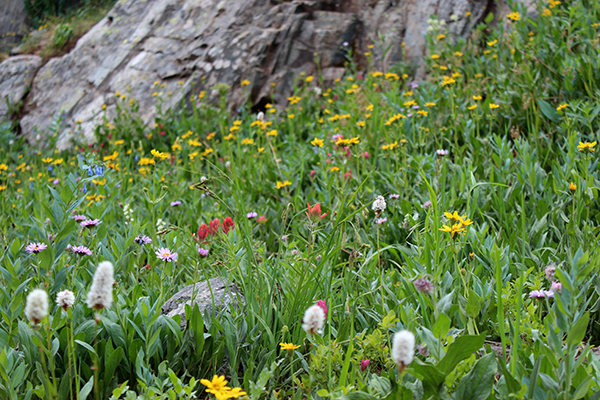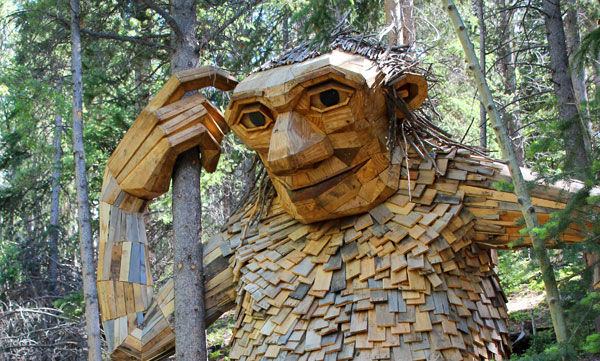Best Bets: Colorado Wildflower Hikes
Wildflower Hikes
Popular Wildflower Hikes in Crested Butte
Or anywhere in Crested Butte—a.k.a. the wildflower capital of Colorado—really. Mid-June through September, sunflowers, paintbrush, columbine, lupine, daisies, fireweed, lilies, and other native flowers take over the landscape. In peak season, late July, you'll find incredible displays of up to 114 different types of wildflowers. Ramble along CB’s beloved Trail 403 for a colorful 7.8-mile moderate out-and-back hike. The well-used and maintained trail connects Washington Gulch to Gothic and climbs to more than 11,300 feet, offering views of the Elk Mountains and a staggering variety of wildflowers. Rustler Gulch, is a 9-mile out-and-back trail where you’ll find entire hillsides blanketed with color. This is considered a moderately challenging route and takes, on average, just under 5 hours to complete. Try the West Maroon Pass Trail to Aspen, which is so prolifically packed with wildflowers it’s become part of Crested Butte’s annual Wildflower Festival. Set aside a little time to swing by Crested Butte Mountain for some singletrack biking, disc golfing or horseback riding along the resort’s painted slopes.
Bighorn Creek Trail, Vail
Head to Eagles Nest Wilderness in East Vail and hike up and out of the Vail Valley on Bighorn Creek Trail, a 7.6-mile wildflower hike that erupts with glorious color. Meander through vivacious meadows and quiet aspen stands, soaking in views of the jagged Gore Range and stopping for a picnic at the old Bighorn Cabin approximately three miles in along the old mining route. Enjoy photo ops with Vail Mountain and Mount of the Holy Cross and trek upward through pine forest and around switchbacks as you gain 2,000 feet in elevation before topping out at an old homestead in a high-alpine meadow.Cathy Fromme Prairie, Fort Collins
The Cathy Fromme Fossil Creek Trail is a naturalist’s haven. It lies in south Fort Collins between Shields Street and Taft Hill Road and offers a 5-mile round-trip stroll across a rolling prairie. A paved handicap-accessible trail provides easy access to wildflower viewing, unfolding in waves of blue flax, evening primrose, wild rose, sulfur flower, western wallflower, Nuttall’s violet, milkweeds, beardtongues and more. A bulletin board at the trailhead provides handy wildflower identification sheets to reference as you stroll. Parents: This is a great hike for young children. Make a game of it and see how many different colors or types of flowers they can spot.Wildflower Hikes, Rabbit Ears Peak Trail, Steamboat Springs
This trail—named for the once prominent bunny-ear-shaped pinnacle rock that has since faded with age and erosion—reveals impressive wildflower blooms each July and August. Embark on the 5.5-mile round-trip hike for classic sun-drenched Colorado meadows and a quick stop for a picnic at the Dumont Lake campground. The moderate out-and-back trail winds up brilliant hillsides and tops out at 10,651 feet. Be forewarned: The last segment of the trail challenges hikers with a rock scramble approaching the summit. Avoid climbing on the “ears” at the peak—they’re a little unstable.
Lost Lake via Hessie Trail - Nederland, CO.
A 4-mile, out-and-back wildflower hike starts at the Hessie Trail and ends at Lost Lake, which will show off some of the meadows and forestlands of the area and, of course, the wildflowers that grow in abundance there.Wildflower Hikes, Ice Lakes - Silverton, CO.
The hike to Ice Lake and Island Lake, near Silverton, is routinely regarded as one of the most gorgeous hikes in a state full of gorgeous hikes. The unbelievably blue water of the lakes will look even prettier in July and August, when columbines, lupines, and other colorful blooms surround it. Approximately 8.3 miles, out and back, considered a challenging route and takes on average 5 hours 15 minutes to complete.
Alpine Loop, Scenic Byway - Ouray, CO.
This 63-mile drive near Ouray is one of Colorado’s scenic byways, and a big part of that scenery during the summer is the displays of wildflowers. Find colorful fields near Engineer Pass, or take a detour at Lake City and hike to American Basin for a picture-perfect view of a waterfall and stream that runs through a field of wildflowers, with a dramatic backdrop of the San Juan Mountains behind it.
Pawnee Buttes - east of Fort Collins
The two huge rock formations, the Pawnee Buttes, are located in the Eastern Plains of Colorado, east of Fort Collins. Here, you’ll find more desert and prairie wildflowers, which are very different and bloom much earlier than their mountainous cousins, so if you can’t wait until July, check out the Pawnee Buttes in May or June for a glimpse of some colorful prickly pears, lavender-leaf sundrops, and mountain cat’s eye.
Wildflower Hikes Etiquette
It can be incredibly tempting to see a colorful field blanketed with wildflowers and to pluck a few to press in your journal or create a quick flower crown or bouquet as you hike. It’s only a few flowers in a field of thousands, right? Wrong, unfortunately. Remember that hundreds of people use Colorado’s trail system every day, and if everyone took even a single flower during their hike, the flowers’ growth wouldn’t be able to keep up.
It’s the same for things like lying in a bed of wildflowers or stepping off the trail and into a colorful blooming field for that perfect Instagram pic. Once one person does it, everyone starts doing it, and don’t let the sunshine and warmth fool you—those fields of wildflowers are just like a fresh blanket of snow. Your footprints will be visible via a path of broken stems, and where you find an untouched field of gorgeous flowers, you’ll leave behind a messy trail.
Colorado’s wildflowers are part of its natural beauty, which is meant to be enjoyed by all. So this summer, as you explore the amazing wildflower hikes, take selfies, and ooh and ahh over them, treat the wildflowers like you would any other Colorado wildlife: keep your distance and leave no trace.
By Lisa Blake






